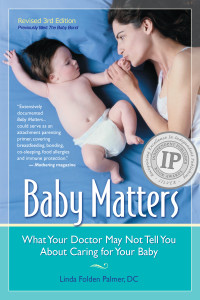 This table from Georgetown University is very telling about SIDS in the U.S. Many publications make the assumption that African-American SIDS rates are higher than Caucasian, in part, due to the fact that U.S. blacks are cosleeping with their infants more often than whites.
This table from Georgetown University is very telling about SIDS in the U.S. Many publications make the assumption that African-American SIDS rates are higher than Caucasian, in part, due to the fact that U.S. blacks are cosleeping with their infants more often than whites.
There’s just one problem with this theory. Hispanic Americans and Asian Americans also have higher bed sharing rates than non-Hispanic whites, but as illustrated in the table below, published by the National SUID/SIDS Resource Center of Georgetown University, U.S. Asian and Hispanic SIDS rates are quite low; much lower than that of whites.
National SUID/SIDS Resource Center of Georgetown University
Is cosleeping a major cause of SIDS?
There are many factors involved in SIDS deaths and in cosleeping deaths. Sleep position seems to be one large factor, with prone sleeping a risk factor, and blacks laying their babies to sleep on their tummies more often than whites. Yet, Hispanics lay their infants on their backs at the same rate as whites, while white SIDS rates are higher.
Caucasians tend to have the most access to and practicing of mainstream medicine and its tenets, yet U.S. Asians and Hispanics maintain the lowest SIDS rates, by far, while they follow more traditional family practices.
References:
A. Francis, Pediatric Chiefs. Cosleeping. The University of Chicago Medicine, Clinic Curriculum Document, 2010. [“African Americans, Hispanic, and South-east Asians have higher rates of co-sleeping.”]
Task Force on Sudden Infant Death Syndrome, Moon RY. SIDS and other sleep-related infant deaths: expansion of recommendations for a safe infant sleeping environment. Pediatrics. 2011 Nov;128(5):1030-9. [“The prevalence of supine positioning in 2010 among white infants was 75%, compared with 53% among black infants. The prevalence of supine sleep positioning among Hispanic and Asian infants was 73% and 80%, respectively.”]
National SUID/SIDS Resource Center of Georgetown University, Statistics Overview, Feb 2013.

Hi there, I came by your website via twitter. You are probably aware, but today the UK’s guidelines regarding co- sleeping have changed. You may be interested to see if this helps to inform your work across the waters:
https://www.nice.org.uk/News/Press-and-Media/draft-recommendations-to-tackle-sudden-infant-death-syndrome-published-for-consultation
Kind Regards
Thank you very much, Carly, for this information. It’s not badly written, but if their goal is truly to save baby’s lives, they should mention an even greater risk:
The second highest risk for SIDS in the below study (after sofa sharing) was an infant sleeping outside of the parental room, with 10.5 times the risk of SIDS as sleeping in the parent’s room, next to their bed.
P. Blair et al., “Babies Sleeping with Parents: Case-Control Study of Factors Influencing the Risk of Sudden Infant Death Syndrome. CESDI SUDI Research Group” British Medical Journal (England) 319, no. 7223 (Dec 4, 1999): 1457-61.
This study looks at 325 babies who died of SIDS, including suffocation deaths, around England from 1993 to 1995, along with 1300 matched controls.
The highest risk of SIDS in this study, like most, was sharing sofa sleeping, at 49 times the risk (same number as Unger et al.) of sleeping alone in the parent’s room.
Very good point Ms.Palmer. I had hoped that someone was going to share this fact. It is very important to present all the facts, not just the ones that support our arguments. Especially on forums like this…